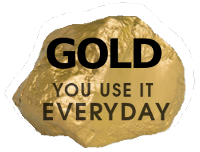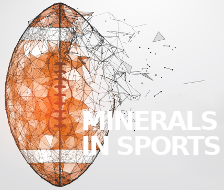- Why Mining Matters
- Jobs
- Safety
- Environment & Operations
- FAQ
- Links
- Fun Stuff
You are here
Debert
Rare earth elements, used in green technologies like electric vehicles and wind turbines, are not as "rare" as their name implies. What is rare is finding them in concentrations high enough to make mining them economically feasible. That is why a REE deposit in Debert is so exciting.
Rare earth elements (REE) are a group of seventeen chemical elements that are used, for example, to make permanent magnets for electric vehicles (EVs), wind turbines and electronics.
REEs are an example of the critical minerals needed to achieve climate goals. The International Energy Agency estimates that demand for REEs could quadruple by 2040 due to the transition to clean energy (https://www.iea.org/reports/the-role-of-critical-minerals-in-clean-energ...).
A REE deposit was discovered in the area of Debert Lake as a result of exploration for another critical mineral: uranium. From 1976-1981, Gulf Minerals Ltd. explored for uranium in the area, which led to the discovery of rare earth mineralization.
Nova Scotia’s 1981 moratorium on uranium exploration and mining brought Gulf’s exploration and investment in Nova Scotia to an end so Gulf’s discovery was not immediately followed up.
Work by Elk Exploration between 2005 and 2007 revealed the presence of rare earth veins in the area. Exploration work since then by Nova Scotian company Magnum Resources Inc. has continued to confirm the area’s significant potential for REEs, including yttrium, neodymium and dysprosium.
Here is why permanent magnets made with RREs are important to achieving climate goals:
Wind Power - When the blades of a wind turbine turn, they generate kinetic energy that a permanent magnet generator then converts into electricity from the interplay between two permanent magnets with reverse polarity. While other magnets could do the job, permanent magnets have a number of advantages, including increased efficiency, smaller size, fewer moving parts that can break, and no need for an external charge (https://epicenter.wcfia.harvard.edu/blog/wind-power-politics-and-magnets).
EVs – An EV motor operates when a coil of wire, encircled by strong magnets, spins. The electric current induced in the coil emits a magnetic field, which opposes the magnetic field emitted by the strong magnets. This creates a repulsive effect, much like putting two north-pole magnets next to each other. This repulsion causes the coil to spin or rotate at a high speed. This coil is attached to an axle and the rotation drives the wheels of the vehicle (https://www.bunting-berkhamsted.com/rare-earth-magnets-in-electric-vehic...).
Permanent magnets also play a central role in helping store information in computers. Hard disk drives (HDD) usually are made up of three permanent magnets. A fixed magnet serves as the actuator, moving the read-write arm based on its interaction with an electromagnet. There’s another small permanent magnet at the end of the read-write arm, which is in charge of the reading-writing actions using a platter. The third magnet is a spindle motor, which facilitates the movement (rotation) of the platter at high speed. This way, the HDD can read and store information (https://www.stanfordmagnets.com/6-uses-of-permanent-magnets-in-everyday-...).
It is lower-tech but another example of how you use permanent magnets every day is refrigerators. When you close a fridge door, have you ever noticed that the door acts as though the fridge itself is pulling it? That is because a permanent magnet embedded in the door helps pull the door closed and keeps it closed tight to ensure energy is not wasted.
Nova Scotia has the potential to supply a number of minerals used in green technologies. Doing so creates jobs for Nova Scotians and government revenues to help pay for programs like health and education.


















































































